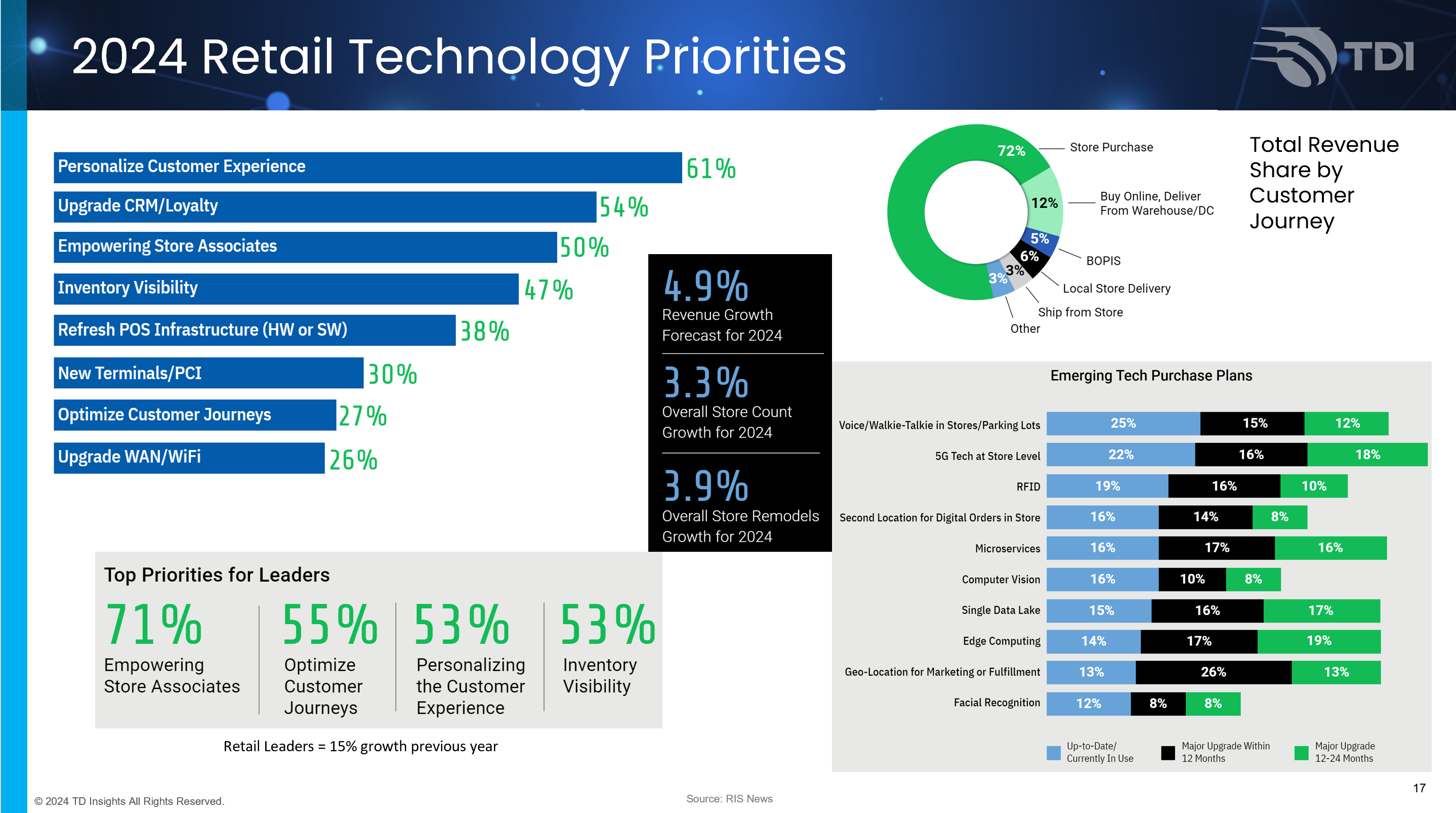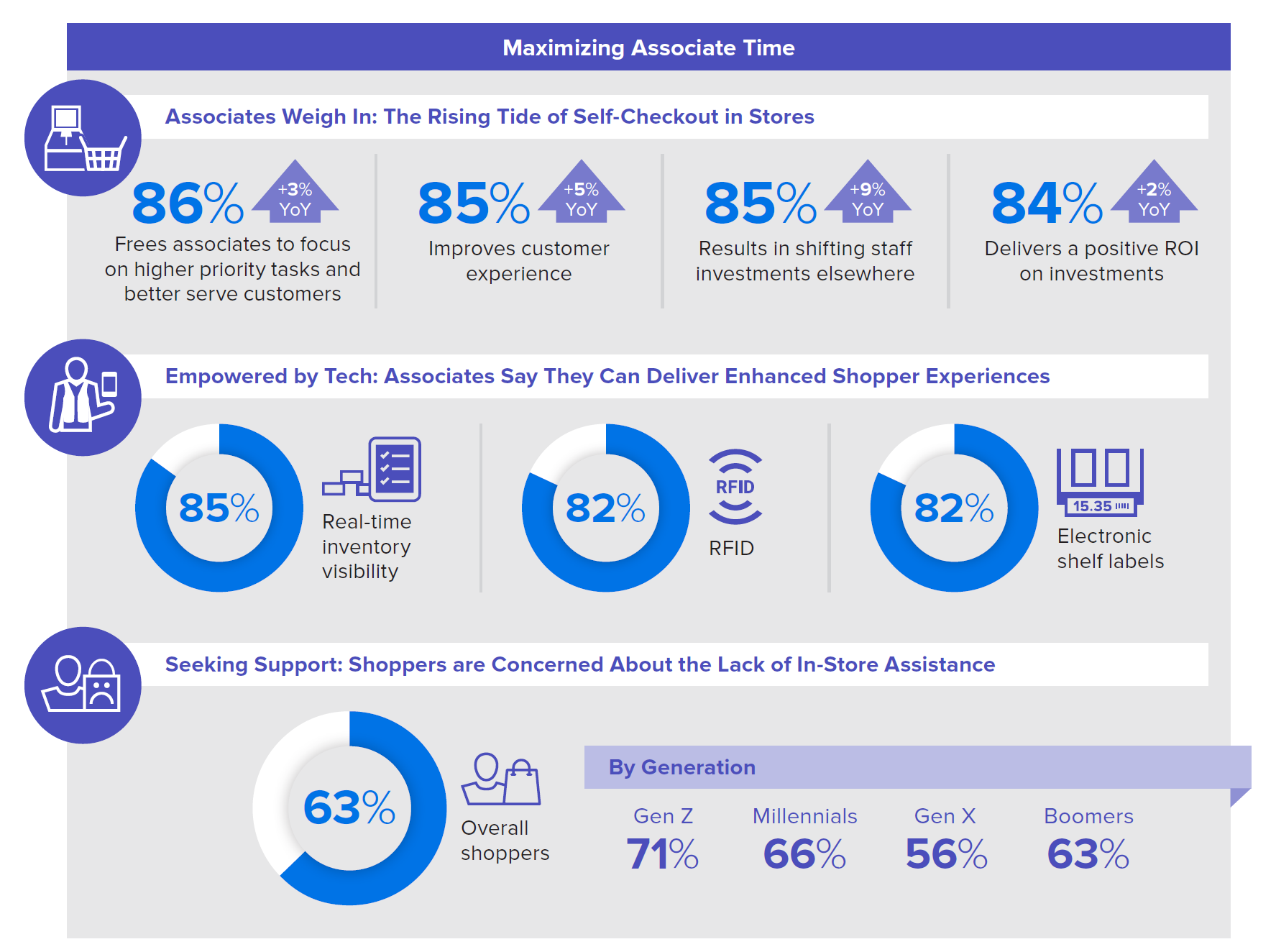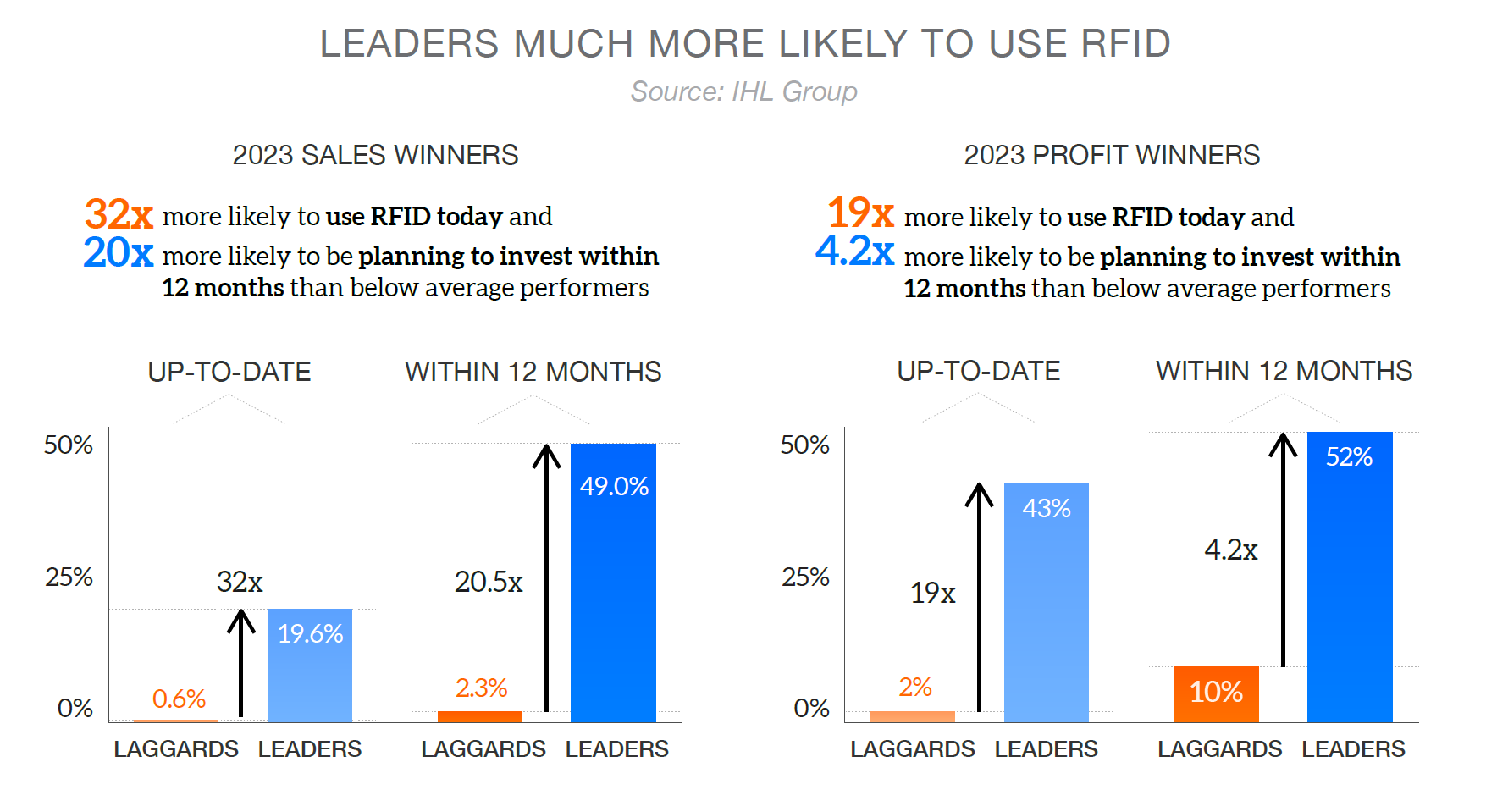Loss Prevention Research Council Weekly Series - Episode 182 - The Game Changer Technology of Retail RFID
With Dr. Read Hayes, Tony D'Onofrio, and Tom Meehan

A favorite retail industry report which I hope Chain Store Age continues post their acquisition of RIS News was the annual Store Experience Study. The research highlighted the yearly technology priorities for retailers and its summary continues to be a mainstay as one of the charts in my 'Disruptive Future of Retail' keynote presentation.
According to the latest Store Experience Study, the top five technology priorities for retailers in 2024 are personalizing customer experiences, upgrading CRM / loyalty programs, empowering store associates, inventory visibility, and refreshing the point-of-sale infrastructure.

Note the top priorities for retail industry leaders (those growing 15% or more the previous year) which include empowering store associates, optimizing customer journeys, personalizing the customer experience, and inventory visibility. The top three emerging technologies of 2024 are voice / walkie-talkie in-store / parking lots, 5G tech at store level, and RFID.
The NRF Big Show in New York earlier this year confirmed that we are all well past the discussion of RFID as an emerging technology. On one of the NRF industry panels, Joe Coll, Macy's vice president of asset protection operations & strategy called it a 'game changer' while on another, Bill Hardware who founded the RFID lab at the University of Memphis where he is now president, called it 'table stakes.'
Is RFID a game changer, table stakes or perhaps both today? This article updates the latest data on the retail industry adoption of RFID and the impact the technology has on retailer profitability.
The State of Retail RFID
The estimated global market size for RFID will be $23.8 billion by 2030. Sixty-one percent of retailers plan to implement RFID in their stores by 2026.
"RFID technology empowers retailers to create a serialized data archive of products in-store, online and at every step of the supply chain. RFID assigns unique identification codes to each item, streamlining inventory tracking and enhancing accuracy. This allows retailers to efficiently manage stock levels, reduce errors and gain visibility into their supply chain."
For multiple retailers, RFID has now become a crime fighting tool through solutions such as 'smart exits'. The serialization of each individual products allows detailed visibility to what is leaving the store and comparing it forensically to what was paid for. Video images can be integrated into exception reporting to highlight potential theft events and expedite investigations.
In my future of retail keynote presentation, I stress the importance of digitally empowered associates. The smartphone as the third megatrend that has evolved retail forward has dramatically enhanced consumer shopping power. Today, 77% of associates–up from 67% in 2022–feel shoppers are better connected to information than they are.
The latest Zebra Shopper Study provides clues on how to maximize and improve the associate time engagement with consumers inside physical stores.

Note again the importance of technology in providing real-time inventory visibility and RFID specifically in providing the detailed information for effective consumer engagement.
The Profitability in Retail RFID
In 2023, according to the IHL Group, companies that are using RFID in their retail operations averaged profit growth that was 57% higher than those which did not. For 2024, the same companies are expecting profitability to be 88% higher than those not already using RFID.
Retail winners (2023 sales growth >10%) are 32x more likely to be using RFID technology than below average retailers and 20.5x more likely to be planning to deploy RFID within the next 12 months.

"Similarly, the 2023 profit winners are 19x more likely to be up-to-date on deployment of RFID technology than below average retailers and are deploying RFID technology at a rate 4.2x higher within 12 months than below average retailers. The same trend holds for the 2024 expected sales and profit winners."
RFID: Table Stakes or Game Changer?
In today's fast moving retail environment where consumers have the power to instantly buy from your competitor, even while standing in your store, RFID is both table stakes and a game changer. As Bill Hardgrave said at NRF, "If you do not have RFID, if you do not have serialized data on your products, you cannot compete.”
It is table stakes because consumers are increasingly demanding accurate inventory management, improved product availability, and more efficient engaging shopping experiences. RFID is a game changer technology because it provides real-time visibility into inventory, streamlines operations, enhances customer experiences, and reduces shrink.
Ultimately, RFID is a technology tool that generates substantial valuable information. The value is in the utilization of the data to improve operations and craft exceptional consumer experiences.
RFID technology is an enabler and not an automatic panacea that solves all problems. It can very effectively address the technologies priorities outlined in the opening of this article. Properly implemented it has the potential to revolutionize retail operations and optimize the profitability of the retail industry.
















